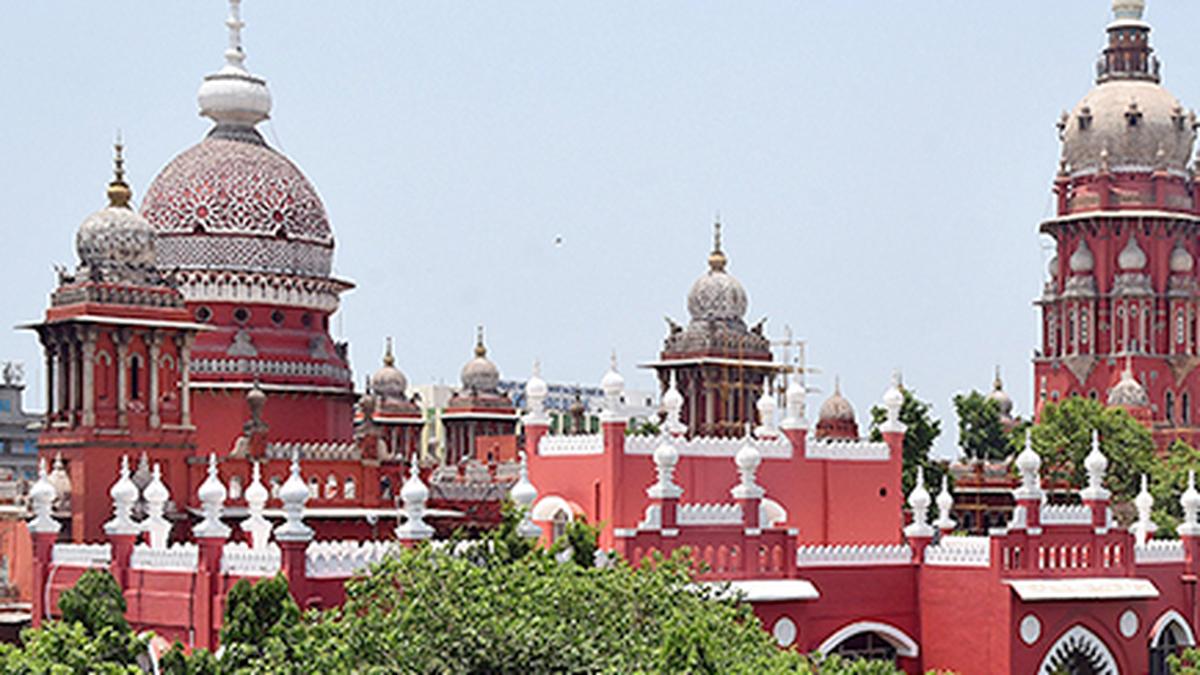Today, I found myself once again drawn to the majestic embrace of the Madras High Court, joining the heritage walk for the fourth time. Yet, as I approached its grand red facade, my heart fluttered with anticipation and awe as if I were beholding this architectural marvel for the very first time.
Each visit, no matter how many times I have walked these corridors, feels like a pilgrimage, an intimate journey into the soul of a building that has been both a silent witness and a guiding force through the chapters of my life.
My first encounter with this venerable edifice was in 1991, as a wide-eyed student, eager and anxious, stepping into a world that would soon become my second home. The Madras High Court, with its soaring domes and intricate Indo-Saracenic details, seemed to beckon me, promising stories of justice, struggle, and triumph. Over the years, it watched me grow from a tentative apprentice, absorbing the wisdom of seasoned advocates, to a junior lawyer, finding my footing amid the hallowed halls. It saw my struggles as a first-generation lawyer, striving to carve a niche, my moments of self-doubt, and the gradual blossoming of confidence as I began to establish myself in the legal fraternity.
Living, breathing companion
But the journey did not end there. This red building, steadfast and dignified, bore witness as I donned the robes of a judge, entrusted with the solemn responsibility of upholding justice in this great chartered High Court. For nearly 35 years, the Madras High Court has been more than a place of work — it has been a living, breathing companion. Every morning, as I walk through its arched corridors towards my courtroom, I am enveloped by a sense of reverence and humility. The very walls seem to murmur tales of the past, echoing the footsteps of legal luminaries who shaped the destiny of law and society. Their voices, though silent, resonate through time, reminding me that I am but a humble custodian in a long, unbroken chain of justice.
There is a peculiar magic in these corridors, an energy that is palpable to those who pause and listen. The Madras High Court has witnessed epochal changes, landmark judgments, passionate debates, and the evolution of law itself. It has been a silent spectator to the ebb and flow of history, to the struggles for justice that have shaped the conscience of our society. Every brick, every pillar, every ornate archway carries the imprint of those who have walked before me, their ideals and convictions woven into the very fabric of this building.
To the uninitiated, the High Court may appear as a mere structure of bricks and mortar, a relic of colonial grandeur. But to me, it is a sanctum, a temple of justice that evokes a sense of piety far deeper than any shrine. Within these walls, I find a communion with something greater than myself, a spirit that transcends time, binding generations of seekers, advocates, and judges in a shared quest for truth. It is here that I have experienced moments of profound clarity, where the weight of responsibility is balanced by the quiet assurance that I am part of a noble tradition.
Today, as I mingled with the throngs of heritage enthusiasts and young aspirants, many were surprised to see a sitting judge among them on a holiday. Perhaps they wondered what draws me back, time and again, to a place where I spend most of my waking hours. How could they know the depth of my attachment, the overwhelming surge of emotion that wells up each time I step into this building? To walk these corridors is to converse with history, to feel the pulse of justice that beats through every chamber. Listening to N.L. Raja, senior advocate, recount the storied past of the High Court, I felt a tide of emotions rise within me — gratitude, humility, and an inexplicable joy. I found myself struggling to hold back tears, grateful for the anonymity afforded by my dark glasses.
There are moments when words fail to capture the intensity of what I feel. How does one articulate the sense of belonging, the gratitude for having been chosen by this building, for having been allowed to serve within its sacred precincts? The Madras High Court has given me more than a career — it has given me purpose, identity, and a profound sense of fulfilment. It has witnessed my victories and my failures, my hopes and my fears. It has seen me at my most vulnerable and my most resolute. In its silent companionship, I have found solace, inspiration, and the courage to persevere.
As I sit alone in my office, searching for words to express the depth of my emotions, I am acutely aware of the tears streaming down my cheeks. Yet, in this solitude, I am grateful for the chance to reflect, to honour the building that has shaped the very core of my being. I am blessed, truly blessed, to have been woven into the tapestry of this great institution. If I were to be born a thousand times, I would choose, again and again, to walk these corridors, to serve this red building, to be a humble part of its enduring legacy.
The Madras High Court is not just a monument of stone and history — it is a living entity, a guardian of justice, a silent mentor. It has given me everything, and in return, I have given it my devotion, my labour, and my love. As I wipe away my tears, I know that my journey with this building is far from over. It is a bond that transcends time, a relationship that will endure for eternity. And so, with a heart full of gratitude and eyes brimming with emotion, I offer this humble tribute to the great red building that has been, and will always be, my home.
anaushram44@gmail.com
Published – August 03, 2025 04:15 am IST

